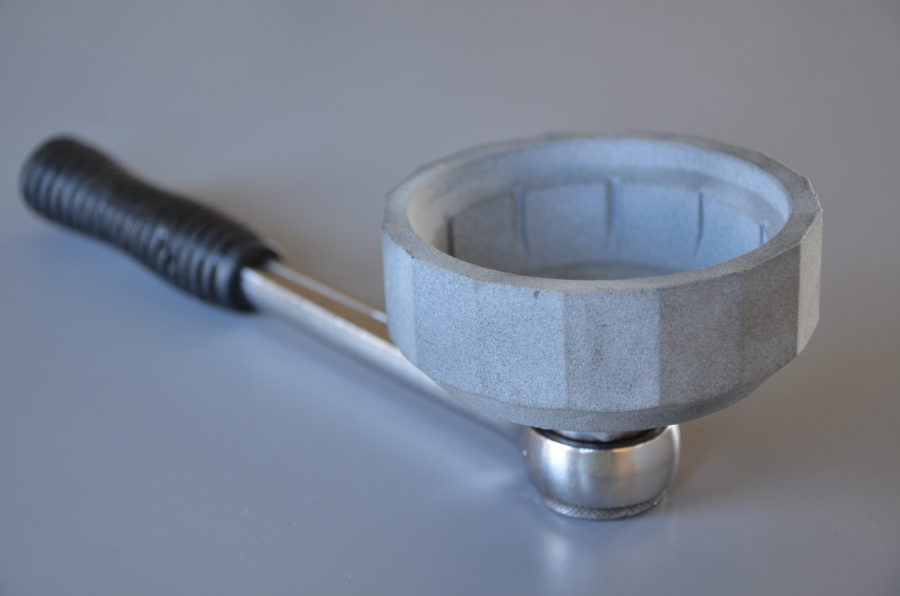Among the highlights of 2016 in 3D printing, we can note the diversity of application cases dedicated to transportation, and in particular toautomotive. A look back at the interest of such a technology for this sector and the most striking advances.

Blade - the 3D printed Supercar by Divergent 3D
The benefits of 3D printing in the automotive sector
The automotive sector is one of the pioneers in the use of additive manufacturing in its creation process. This technology has opened up new perspectives in automotive production: for functional prototyping, for design, for tooling and for the production of serial parts. Currently, the largest manufacturers in the sector create more than 100,000 parts per year using 3D printing. However, it is a given that 3D printing will never be able to compete with current industrial methods in terms of production costs, except for the replacement of parts made by CNC machining (which are costly and time-consuming to produce).
3D printing also promotes iterative work, allowing for more thorough testing of parts before safely moving into production. It is also ideal for creating durable prototypes and parts from high-performance engineering thermoplastics in the project phase.
Another important factor, and not the least, is to reduce the environmental footprint of the manufacturing process. The latter remains a crucial issue as the number of vehicle users increases.
State of the art of existing applications
BMW was one of the first to use this technology 25 years ago on parts of its Z4 GT3 race car, as well as on its Z4 GTR version, which are already on the market. Today, the German carmaker uses additive manufacturing in a variety of areas: as an ergonomic tool in vehicle assembly to protect its employees, or in "reverse engineering" for old vehicles to reproduce parts that are currently unavailable.
Ford, too, has been a pioneer in the use of 3D printing technology. In 1988, the company purchased one of the few 3D printer models available on the market. Today, Ford estimates that more than 500,000 parts in its workshops have been created via additive manufacturing. They are using this technology to save time on the creation of components and prototypes, which is extremely time consuming via traditional industry. One example is the manufacture of an F1-style steering wheel for the Ford GT, Ford's ultra-sporty model.
Blade has gone one step further by creating the first fully 3D printed car using SLS (laser sintering) technology. This electric car has two main features that set it apart:
- performance (it goes from 0 to 100 km/h in only 2.5 seconds thanks to its 700 horsepower engine and its weight, which is half that of a conventional car).
- respect for the environment (its production has three times less impact on the environment than that of conventional electric vehicles).
And the others?
The global transportation sector is currently undergoing a transformation. 3D printing offers such possibilities in manufacturing that the big players, but also the smaller ones, are now convinced of its usefulness and do not hesitate to use it.
For example, APWorks has created an ultra-lightweight (35 kg!) 3D printed motorcycle that can reach speeds of up to 80km/h. Divergent 3D, in partnership with Peugeot, has also unveiled a new motorcycle model, the Dagger, with an ultra-light 3D printed chassis.
A minibus was also created thanks to additive manufacturing: Olli, a vehicle that is both connected and intelligent, with the capacity to transport up to 12 people.
Finally, the bicycle market, a rapidly growing market, is not spared by the "3D" phenomenon! Students in partnership with MX3D had launched in 2016 theArc Bicycle: it was a 3D printed steel bike. Before them, a bike "made in Japan" had seen the light of day: Triple Bottom Line had launched the DMF01, a bike that was meant to be a competitor to the most advanced racing bikes. It was created using a laser sintering process, which allows to design layer by layer the different elements of the bike frame from metal powder.
Once again, 3D printing is proving that it can be adapted to all sectors, from the most everyday to the most professional. As far as the transportation sector is concerned, this technology is now anchored in the manufacturing processes and has become essential.

